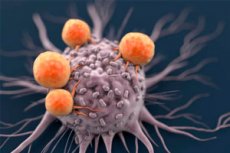
彼得麦克研究所的研究人员找到了关于细胞如何运作这一长期问题的答案,这可能会在未来带来更好的癌症治疗方法。
人体中的每个细胞都拥有相同的DNA,但不同的细胞却执行着不同的功能。这项发表在《自然遗传学》杂志上的研究有助于解释这一现象背后的机制,其影响可能十分深远。彼得·麦克研究所的医学科学家兼研究副主任马克·道森教授表示,他对这项新发现感到非常高兴,因为它更好地解释了细胞命运是如何决定的。
他说:“细胞功能是‘转录因子’作用的结果,转录因子扫描我们的 DNA 并确定哪些基因应该被开启以及开启到何种程度。”
“我们已经研究了这些转录因子如何募集和传递启动基因所需的机制。到目前为止,我们还不知道‘转录因子’是如何选择正确的机制来读取和表达基因的。”
“这是一个长期存在的问题,我们很高兴能够帮助解决部分问题,因为了解转录因子究竟如何决定以何种机制激活基因,为我们提供了有关生命的基本知识。”

比较性CRISPR筛选鉴定了九种不同转录激活因子(AD)所需的辅因子。来源:Nature Genetics (2024)。DOI:10.1038/s41588-024-01749-z
研究表明,转录因子会选择一组独特的成分来控制基因表达,从而产生预期的效果,无论是控制细胞的能量消耗、触发免疫反应还是我们身体所需的其他功能。道森教授表示,这可以与汽车的制造方式进行比较,并解释了这一重要发现如何成为寻找一系列疾病更好治疗方法的关键。
他说:“F1 赛车与家用小型货车甚至拖拉机有很大不同,有些赛车的设计目的是快速行驶,有些赛车的设计目的是运载贵重货物,有些赛车的设计目的是做艰苦的工作。”
“我们发现基因表达也是如此,这取决于转录因子所招募的成分。这些成分可以决定哪些基因可以快速变化,例如当我们需要抵抗感染并需要快速反应时,哪些基因需要缓慢而稳定地工作,产生细胞管家功能所必需的信息。”
“了解转录因子如何调节基因表达非常重要,我们希望将来利用这一点来帮助我们治疗各种疾病。
“如果我们考虑癌症,癌症突变可以阻止转录因子选择正确的成分来正确表达基因,就像汽车的零件混在一起了,它就不能再可靠地运行了。”
彼得麦克的博士后研究员查尔斯贝尔博士表示,他们已经开发了一个平台来筛选转录因子使用的数千个组件的功能,以确定基因如何表达。
他说:“我们现在将利用这个平台来了解与基因表达相关的其他过程。”
“这些问题的答案将帮助我们找到不仅治疗癌症而且治疗未来许多其他疾病的新方法。”

